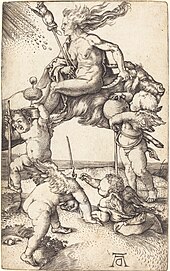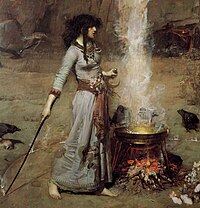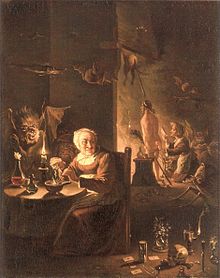The Art and Mystique of Witchcraft: A Journey into the World of Magic
Introduction:
Witchcraft, a practice steeped in ancient traditions and mysticism, has captured the imagination of individuals throughout history. This article aims to explore the intricate world of witchcraft, shedding light on its historical roots, modern-day interpretations, and the diverse beliefs associated with this esoteric craft.
1. Historical Origins of Witchcraft:
Witchcraft's roots can be traced back to ancient civilizations, where individuals were revered for their knowledge of natural forces. The Middle Ages marked a tumultuous period, with witch hunts and trials leaving an indelible mark on the perception of witchcraft.
2. The Diverse Practices of Witchcraft:
Witchcraft is not a monolithic practice; rather, it encompasses a wide array of traditions, each with its unique rituals and beliefs. Wicca, a modern pagan religion, and various folkloric traditions contribute to the diverse tapestry of witchcraft practices.
3. Witchcraft in the Modern Context:
In contemporary society, witchcraft has experienced a resurgence, with individuals embracing it as a spiritual practice. Modern witches often draw inspiration from ancient traditions while adapting their craft to suit the complexities of the 21st century.
4. The Connection Between Witchcraft and Nature:
One of the defining characteristics of witchcraft is its intimate connection with nature. Many practitioners revere the elements, use herbs, crystals, and other natural elements in their spells, emphasizing a harmonious relationship with the environment.
5. Tools of the Craft:
Witches often employ various tools to enhance their magical workings. These may include wands, athames (ritual knives), crystals, and spell books. Each tool holds symbolic significance and is utilized in rituals to channel energy.
6. The Role of Intention in Witchcraft:
Central to witchcraft is the power of intention. Practitioners believe that the focused intention behind spells and rituals determines their effectiveness. Positive and negative energy play a pivotal role in shaping outcomes.
7. Witchcraft and Spirituality:
For many, witchcraft is not just a set of rituals but a deeply spiritual practice. It provides a framework for personal growth, self-discovery, and connection with a higher power or the divine.
8. Debunking Misconceptions:
Witchcraft has often been shrouded in misunderstanding and misconceptions. Separating fact from fiction is crucial to appreciating the true essence of this ancient practice and dispelling unfounded fears.
9. Embracing Witchcraft: A Personal Journey:
Individuals interested in exploring witchcraft are encouraged to embark on a personal journey of self-discovery. Reading, connecting with like-minded communities, and seeking guidance from experienced practitioners can provide valuable insights.
Conclusion:
Witchcraft, with its rich history and contemporary relevance, continues to captivate those drawn to the mystical and magical. As society evolves, so too does the practice of witchcraft, offering a dynamic and ever-expanding tapestry for those who dare to explore its enchanting realms.
Introduction:
Witchcraft, a practice rooted in ancient traditions, manifests in diverse forms across various cultures. The unique historical, cultural, and societal contexts shape the nuances and expressions of witchcraft, making it a fascinating subject of exploration.
1. African Witchcraft:
In many African cultures, witchcraft is deeply ingrained in spiritual beliefs. Witch doctors or healers are often revered, utilizing herbs, rituals, and divination to heal or protect communities. The perception of witchcraft varies, with some viewing it as a positive force and others associating it with harm.
2. European Witchcraft:
The European witchcraft narrative is dominated by the infamous witch trials of the Middle Ages. However, contemporary European witchcraft, particularly in regions like Scandinavia, has evolved into practices like Seiðr, a Norse magical tradition, and modern Wicca.
3. Native American Shamanism:
Indigenous cultures in North and South America have their own forms of witchcraft, often intertwined with shamanic practices. Shamans, as spiritual leaders, connect with the spirit world to seek guidance, healing, and protection for their communities.
4. Asian Folk Magic:
Asian cultures boast a rich tapestry of magical traditions, from Chinese Taoist sorcery to Japanese Onmyōdō. These practices often involve a synthesis of religious, philosophical, and occult elements, aiming to maintain harmony between the natural and supernatural realms.
5. Middle Eastern Mysticism:
In the Middle East, various forms of mysticism and magic have deep historical roots. Practices such as Kabbalah in Judaism, Sufism in Islam, and ancient Mesopotamian rituals demonstrate the diversity of magical traditions in the region.
6. Caribbean and Latin American Brujería:
The Caribbean and Latin America are home to vibrant traditions like Santería, Candomblé, and Curanderismo. These syncretic practices blend indigenous beliefs with elements of African religions and Catholicism, creating unique magical systems.
7. Australian Aboriginal Dreamtime:
The indigenous peoples of Australia have a rich spiritual tradition known as Dreamtime, where magic and the supernatural are interwoven. Dreamtime stories and rituals connect individuals with ancestral spirits and the land.
8. Wicca and Modern Paganism:
The modern revival of witchcraft, particularly Wicca, has transcended cultural boundaries. Wicca draws inspiration from various pagan traditions and emphasizes nature worship, creating a global community of practitioners with shared rituals and beliefs.
Conclusion:
The multifaceted nature of witchcraft across cultures reflects the rich diversity of human spiritual expression. Whether rooted in ancient traditions or emerging as contemporary practices, witchcraft continues to be a dynamic and evolving aspect of the global cultural tapestry. Understanding these variations enhances our appreciation for the intricate and often interconnected world of magical traditions.
Introduction:
Witchcraft and spiritualism, though often used interchangeably, represent distinct paths in the realm of metaphysical practices. Understanding the fundamental differences between the two is crucial for those navigating the diverse landscape of esoteric beliefs and practices.
1. Witchcraft:
Witchcraft is an ancient and diverse practice that involves the manipulation of energy, often through rituals, spells, and incantations. Witches, practitioners of witchcraft, may draw upon various traditions, including Wicca, folk magic, or ceremonial magic. Witchcraft is often associated with the harnessing of natural forces and the use of symbolism in rituals.
2. Spiritualism:
Spiritualism, on the other hand, is a belief system centered around communication with the spirit world. Practitioners of spiritualism, often known as mediums or spiritualists, seek to connect with the spirits of the deceased or other non-physical entities. The practice gained prominence in the 19th century and is characterized by séances, mediumship, and a focus on the afterlife.
3. Focus and Intent:
While both witchcraft and spiritualism may involve rituals and ceremonies, their primary focuses differ. Witchcraft is often associated with the manipulation of energy for various purposes, including healing, protection, or manifestation. Spiritualism, conversely, revolves around communication with the spiritual realm, seeking guidance or messages from entities beyond the physical plane.
4. Nature of Entities Involved:
In witchcraft, practitioners may work with deities, nature spirits, or other magical entities depending on their tradition. Spiritualism, however, primarily involves contact with spirits of the deceased or angelic beings. The entities invoked in spiritualism are often seen as messengers or guides rather than sources of magical power.
5. Religious Affiliation:
Witchcraft can be practiced within a variety of religious frameworks, including Wicca, paganism, or as a standalone spiritual practice. Spiritualism, while not inherently tied to a specific religion, often incorporates elements of Christianity or operates independently as a metaphysical belief system.
6. Ritual Tools and Symbols:
Witchcraft commonly employs tools such as wands, athames (ritual knives), and various symbols in rituals. These tools are used to channel energy and focus intentions. Spiritualism, in contrast, relies more on the use of mediums and psychic abilities for communication with the spirit world, with less emphasis on ritual tools.
Conclusion:
In essence, while witchcraft and spiritualism share the broader umbrella of metaphysical practices, their distinctions lie in their primary objectives, the entities involved, and the nature of their rituals. Recognizing these differences allows individuals to navigate these spiritual paths with a clearer understanding of their unique aspects and practices.


References[edit]
https://en.wikipedia.org/wiki/Witchcraft
https://www.britannica.com/topic/witchcraft
https://www.parliament.uk/about/living-heritage/transformingsociety/private-lives/religion/overview/witchcraft/


































